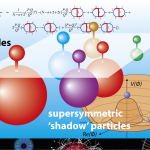Precies twinting jaar geleden besloot CERN om de broncode voor het World Wide Web vrij beschikbaar te maken. Een beslissing die ons leven in veel opzichten drastisch veranderde. Om hierbij stil te staan, zette CERN de allereerste website weer online.
Door de nauwe samenwerking tussen CERN en Nikhef had ook Nikhef veel te maken met de zogenaamde W3 technologie. Naast CERN en SLAC, had Nikhef de derde website ooit in de wereld!
Meer informatie over Nikhef en het WWW vindt u hier.
Original CERN press release
Geneva, 30 April 2013 On 30 April 1993 CERN published a statement that made World Wide Web technology available on a royalty free basis, allowing the web to flourish.
On 30 April 1993 CERN published a statement that made World Wide Web ("W3", or simply "the web") technology available on a royalty-free basis. By making the software required to run a web server freely available, along with a basic browser and a library of code, the web was allowed to flourish.
British physicist Tim Berners-Lee invented the web at CERN in 1989. The project, which Berners-Lee named "World Wide Web", was originally conceived and developed to meet the demand for information sharing between physicists in universities and institutes around the world.
Other information retrieval systems that used the internet – such as WAIS and Gopher – were available at the time, but the web’s simplicity along with the fact that the technology was royalty free led to its rapid adoption and development.
“There is no sector of society that has not been transformed by the invention, in a physics laboratory, of the web”, says Rolf Heuer, CERN Director-General. “From research to business and education, the web has been reshaping the way we communicate, work, innovate and live. The web is a powerful example of the way that basic research benefits humankind.”
The first website at CERN – and in the world – was dedicated to the World Wide Web project itself and was hosted on Berners-Lee’s NeXT computer. The website described the basic features of the web; how to access other people’s documents and how to set up your own server. Although the NeXT machine – the original web server – is still at CERN, sadly the world’s first website is no longer online at its original address.
To mark the anniversary of the publication of the document that made web technology free for everyone to use, CERN is starting a project to restore the first website and to preserve the digital assets that are associated with the birth of the web. To learn more about the project and the first website, visit http://first-website.web.cern.ch
Read the original press release.
Contact Cern press office
press.office@cern.ch
+41 (0)22 767 34 32
+41 (0)22 767 21 41
*CERN, the European Organization for Nuclear Research, is the world’s leading laboratory for particle physics. It has its headquarters in Geneva. At present, its member states are Austria, Belgium, Bulgaria, the Czech Republic, Denmark, Finland, France, Germany, Greece, Hungary, Italy, the Netherlands, Norway, Poland, Portugal, Slovakia, Spain, Sweden, Switzerland and the United Kingdom. Romania is a candidate for accession. Cyprus, Israel and Serbia are associate members in the pre-stage to membership. India, Japan, the Russian Federation, the United States of America, Turkey, the European Commission and UNESCO have observer status.
